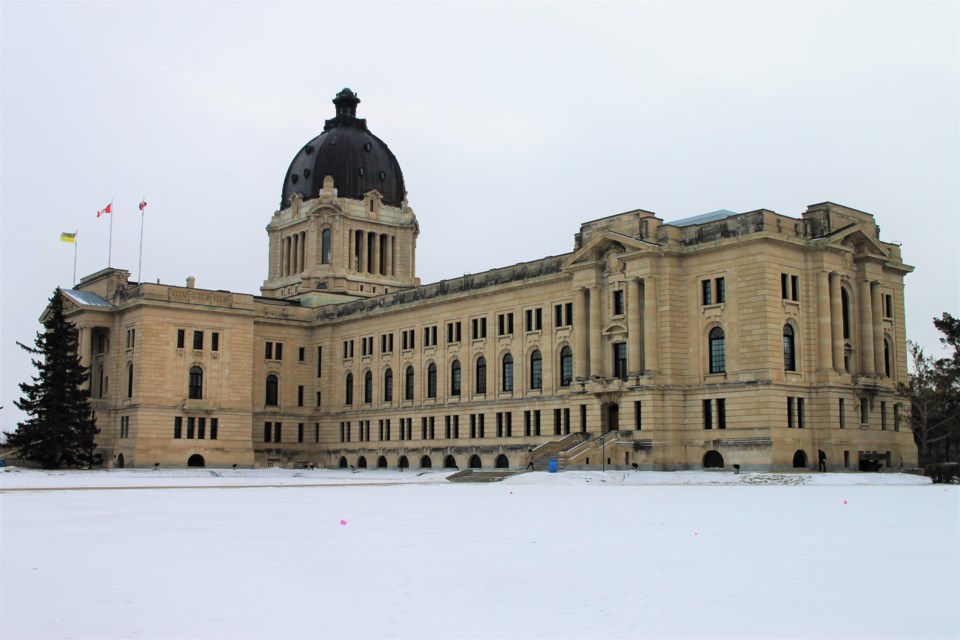WESTERN PRODUCER — Agricultural spending in Saskatchewan is expected to be up in 2022-23, largely because of crop insurance premium costs.
The province budgets its business risk management spending based on federal estimates, and this year the allocation is up by $73.5 million. Nearly all of that, or $70 million, is for crop insurance premiums, which are the biggest line item in the ministry's estimates.
AgriStability costs are expected to be down just slightly, from $25.3 million last year to $24.665 million.
AgriInvest costs are going up, from $35.7 million to $39.839 million.
Overall, the ministry spending is pegged at $462.4 million, up from $386.9 million last year.
It includes a $2 million increase in research funding for the highest total ever at $33.8 million. The new money is going to the Global Institute for Food Security to "define, accelerate and communicate" agriculture's contributions to improving the environment.
Animal Protection Services of Saskatchewan funding is doubling to $1.6 million to help it expand to include service in Saskatoon. APSS, the city and Saskatoon Police Service will provide enforcement as of April 1, with APSS taking over full enforcement by the fall.
Also April 1, PST exemptions will be clarified to include digging dugouts on farms.
An extra $2.5 million is available to support producers who want to develop irrigation.
One of the overall budget highlights is an enhanced Saskatchewan Value-added Agriculture Incentive that the recently announced canola crush, pulp and biofuel plants, lumber mills and potash mines are eligible to receive.
The SVAI is a tax rebate on capital expenditures of $10 million or more.
The government has increased the tax credit for higher levels of investment. The credit is 15 percent on a project up to $400 million, 30 percent for projects between $400 and $600 million and 40 percent for projects valued at $600 million or more.
The change is retroactive to the start of SVAI in 2018. The dollar value of the credit is capped at $250 million.
Finance minister Donna Harpauer said the value of the projects already announced is about $13.6 billion and the benefits of construction and permanent jobs far outweigh the tax credit.
Meanwhile, education property tax mill rates are going up for all classes to bring them more in line with each other. The 2022 EPT mill rates will be 1.42 for agriculture, 4.54 for residential, 6.86 for commercial/industrial and 9.88 for resource land. The government said the average residential taxpayer would pay about $13 more per year.
The province projects a budget deficit of $463 million, based on revenue of $17.2 billion and expense of $17.6 billion. It is expanding the activities to which PST applies to those that already charge GST. This will include concerts and tickets to for-profit sporting events such as Saskatchewan Roughrider games but not non-profits such as local curling clubs or rodeos.
As of midnight, the price of cigarettes is rising by two cents per cigarette, as are other tobacco products.
As always, the health budget takes the lion's share of the dollars at $6.82 billion, followed by education at $3.8 billion. Social services and assistance are next, followed by agriculture-related spending.
Harpauer said while resource prices have risen dramatically, the government will not fall into the trap of relying too much on things like potash and oil money because the prices could change. For example, every dollar change in the price of oil represents $14 million to the province either way.
The province was able to pay $450 million on its debt due to a revenue windfall in non-renewable resources.
The overall debt is about $30 billion, including the Crown corporations' debt that Harpauer described as supported by utility rates. When the government borrows for capital projects it invests some of that money into sinking funds for future payments, she said. The operating debt is about $10.5 billion.




